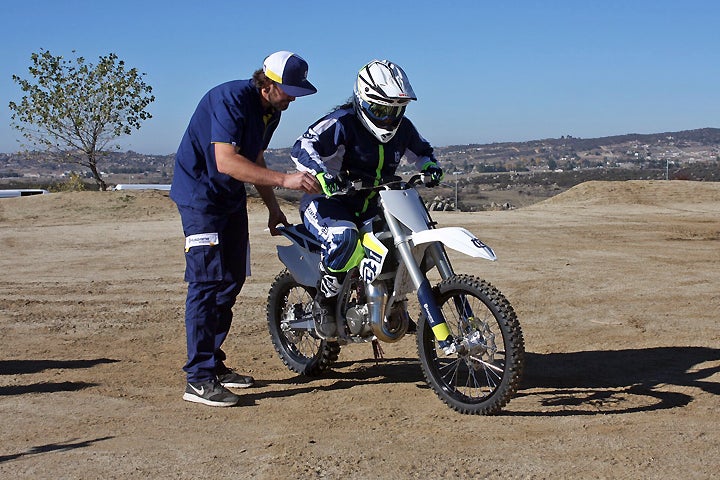
Did you ever hate a subject in school, but later come to realize you just had a lousy teacher? The art of teaching is complicated one. When done correctly, it can make you not only learn the subject, but learn to love it as well. Obviously the opposite is also true.
When you’re teaching someone to ride dirt bikes—with the hope that they’ll love it and want to do it again—it’s important to not only get the steps right, but also make sure you’re giving your beginner the best opportunity to make their first experience a positive one. That’s why this list isn’t for beginners, but for those teaching the beginners. There’s a lot riding on you, perhaps more than you know, as the imparter of dirt-bike wisdom. I’ve seen it go south so many times, particularly in the case of the guy trying to teach his wife/girlfriend to ride. I’ll let you guess who’s who in this classic confrontation:
“It’s not working.”
“Well, you didn’t do it right.”
“Yes, I did.”
“Obviously you didn’t.”
(The look) “What is your problem?”
“I’m trying to help you!”
“Well you’re not!”
Argument escalates, patience is lost, sometimes tears are involved… I’ve witnessed this scene many times. In most cases, I’ve been able to step in and assist in the riding lesson, and as a fellow female rider who learned to ride late in life (read on to learn why that is relevant) I’ve had a lot of success doing so.
Following are my top 10 pointers for things to remember, things to consider and things to avoid doing when teaching someone to ride a dirt bike. Of course, there’s no way to guarantee your padawan learner will make a perfect entry into the sport, but hopefully these tips will give them (and you) the best opportunity for success.
10. Be smart! Make it easy.

Don’t put a beginner on a 450. Don’t start someone out in sand, mud or hilly, rocky terrain right away. These sound like no-brainers, but you’d be surprised what I’ve seen. A flat, spacious area with mid- to hard-pack terrain is best. Soft ground like sand or mud is harder for beginners, especially on smaller wheel sizes. A crowded situation where they have to worry about other riders, or a busy camping/staging area will also make things difficult. Somewhere without distractions of other riders zooming by, or cars/RVs to avoid would be best. We all know what happens when you try to avoid that one rock in the trail…
I would also recommend riding the “beginner bike” first to make sure everything is in working order. Consider that an inexperienced rider can’t tell you if the brake isn’t working right, or if the clutch is slipping. (I remember learning on a YZ100 with an improperly routed throttle cable. It was causing the throttle to open when I turned the handlebar. Of course, I kept crashing, but I had no idea why! They were calling me “whiskey throttle” until someone else rode the bike and discovered the problem.)
 Your Privacy Choices
Your Privacy Choices